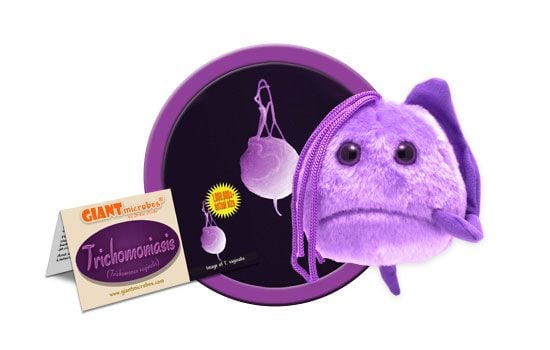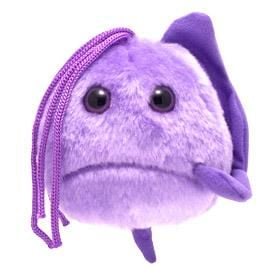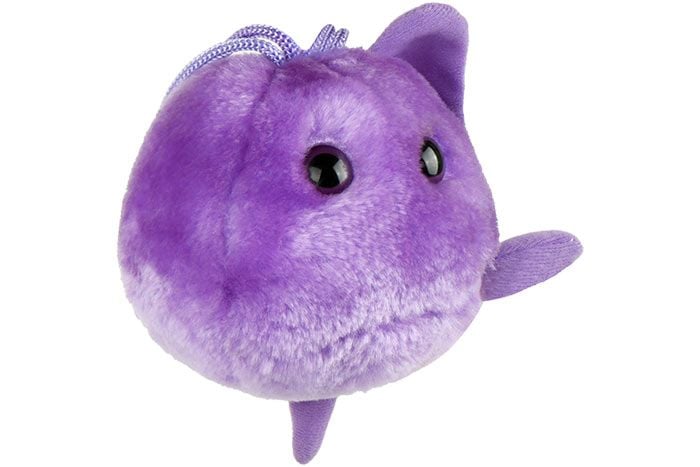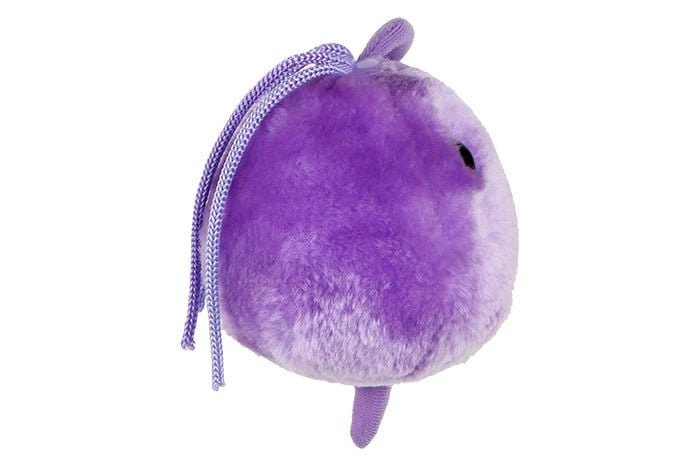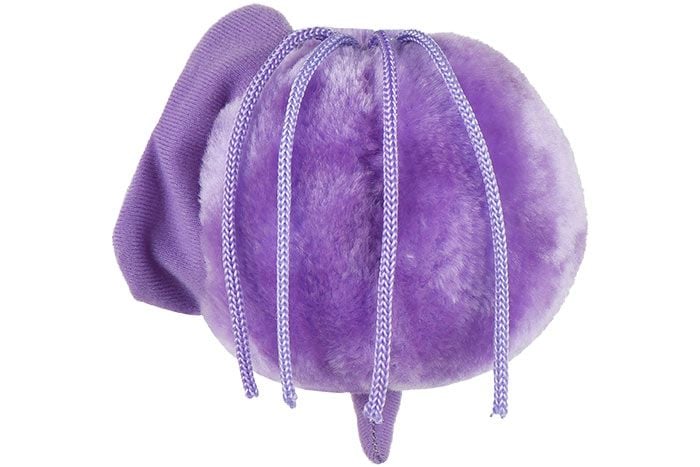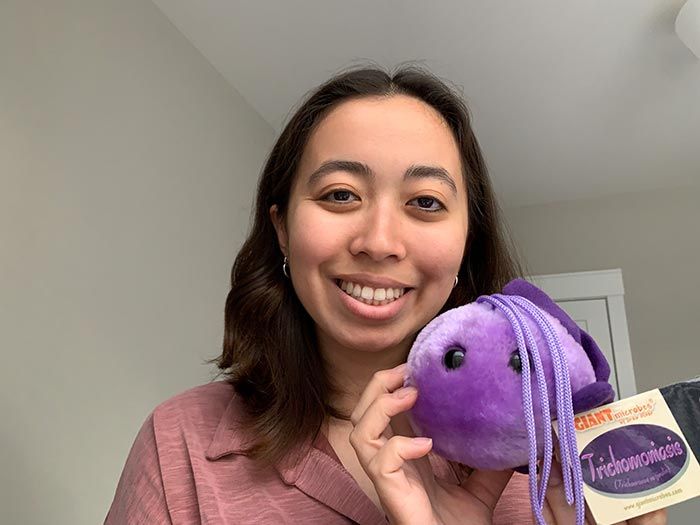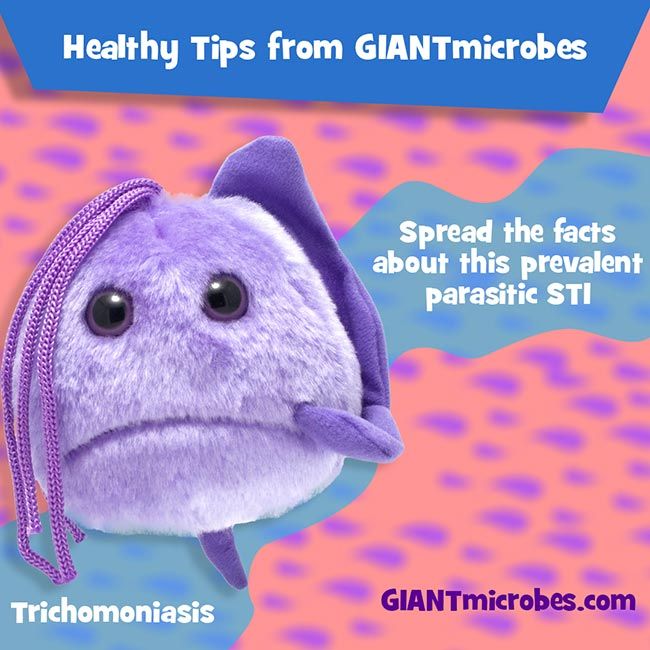Trichomoniasis (Trichomonas vaginalis)
Featured on NPR's popular game show Wait Wait.. Don't Tell Me!
Product Details
Additional Information
| Sizes | Giantmicrobes are based on actual microbes, cells, organisms and other critters, only 1,000,000 times actual size! Gigantic (GG) 16-24" XL (XL) 10-15" Original (PD) 5-8" Keychain (KC) 2-4" with clip |
|---|---|
| Materials | Plush from all new materials. Stuffed with polyester fiber fill. Surface washable: sponge with water & soap, air dry. |
| Packaging | Each plush microbe includes a printed card with fun, educational and fascinating facts about the actual microbe or cell. |
| Safety | Every product meets or exceeds U.S. and European standards for safety. For ages 3 and up. |
All about Trichomoniasis (Trichomonas vaginalis)
FACTS: Trichomoniasis, or Trich, is one of the most common sexually transmitted diseases. It is caused by the Trichomonas protozoa – and millions of people start a relationship with this little parasite every year.
Although men and women can both become infected, it tends to victimize young women as it is typically asymptomatic in men. Indeed, men can carry the disease unknowingly for years – though some men do develop itching and burning sensations which demand attention.
Fortunately, it’s very easy to break up with Trich: one dose of antibiotics usually does the trick. Unfortunately, the cure is not a vaccine and it does not provide protection from further unwanted attentions.
In fact, the newly-cured patient can immediately become re-infected if re-exposed to the organism. (Some call Trich the “ping pong” parasite because it can so easily be passed back and forth by those who play doctor.)
Although some women who are involved with Trich may be asymptomatic like men, generally discharges provide warnings sufficient to justify medical action. And these signals should not be ignored: trichomoniasis can increase the risk of contracting both herpes and HIV – as well as the risk of pelvic inflammatory disease, premature birth and low birth weight, and indeed infertility. So if you find yourself in a bad relationship, end it before it breaks your heart.
| Name | This parasite’s name comes from the Greek root “trikhos”, meaning hair. It describes the characteristic hairs this organism has on one end, called polar flagellates. |
|---|
| Actual Size | It’s about 10 micrometers, which is 1,000 times smaller than a ladybug! |
|---|
| Where It Lives | Trichomoniasis, also called “Trich”, is a sexually transmitted disease caused by a parasite called Trichomonas vaginalis. Like other STDs, it’s spread from person-to-person during unprotected sexual contact. |
|---|
| Symptoms | People who catch this bug usually experience itching, burning, pain, swelling, and an unusual discharge with an extremely unpleasant odor. If left untreated, it could cause damage to the reproductive system in women. |
|---|
| Cure | Trich is one of the most common STDs in the world. Fortunately, it’s very easily cured with metronidazole antibiotics. |
|---|
| History |
This parasite was first discovered by French scientist Alfred Francois Donne, the same guy that discovered leukemia. One man and two great contributions to medicine! Outbreaks: Trichomoniasis is very commonly found all over the world and still considered to be grossly underdiagnosed. It’s estimated that globally, one in five people will be infected in their lifetime. One of five of them will be infected again within three months! |
|---|
| Fascinating Facts |
Trichomonas, gonorrhea, and chlamydia are three of the most common sexually transmitted infections in the U.S. They’re easily tested for at the same time, and in case you were wondering, a person can be positive for all three at the same time. Now that’s what you call a triple threat! Famous people who died of it: As uncomfortable as the symptoms of this disease may be, people don’t usually die from trichomoniasis unless they have an underlying condition that prevents their immune system from fighting back. |
|---|


